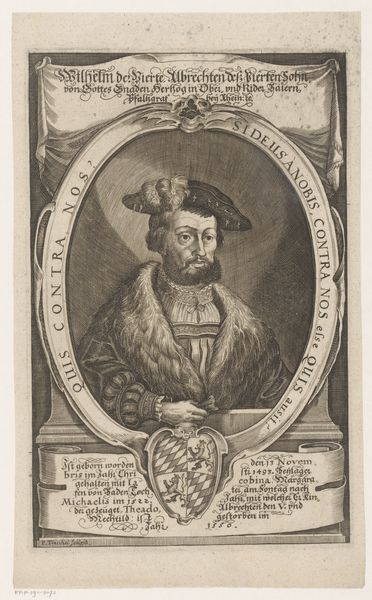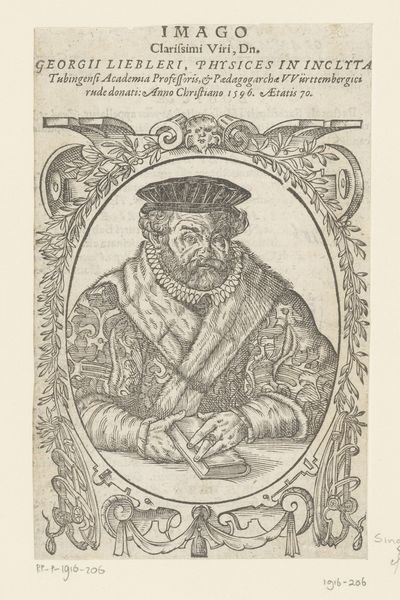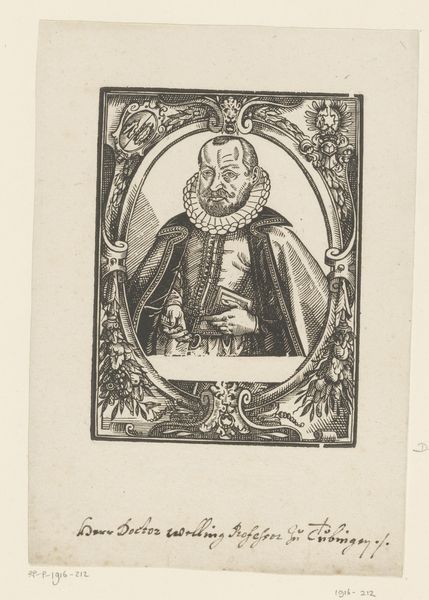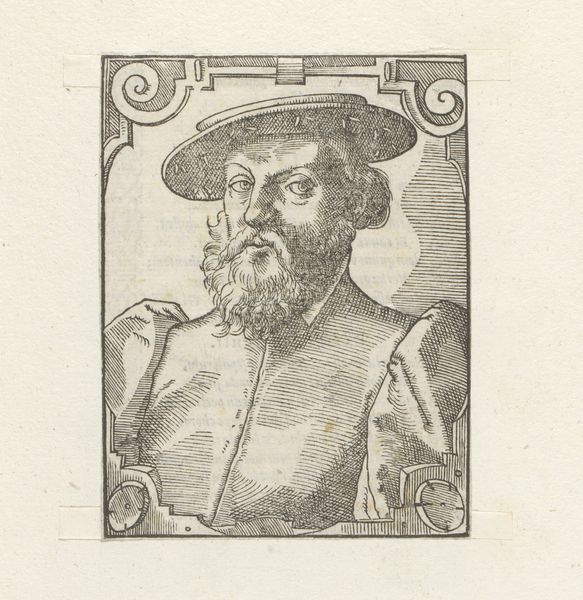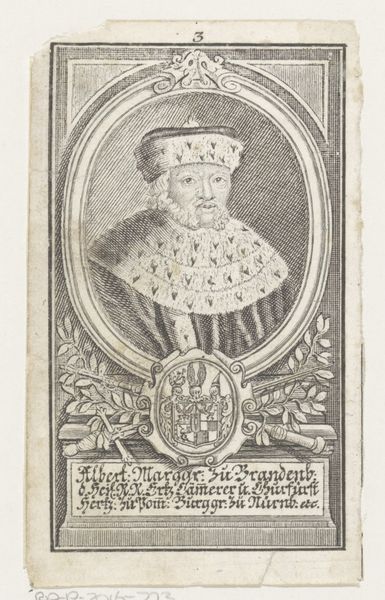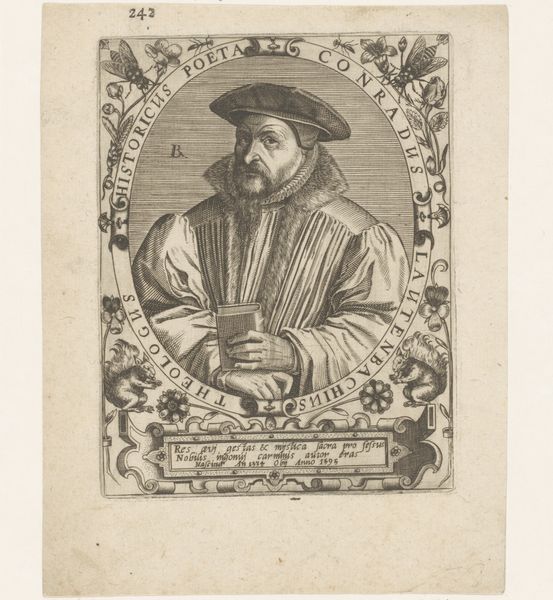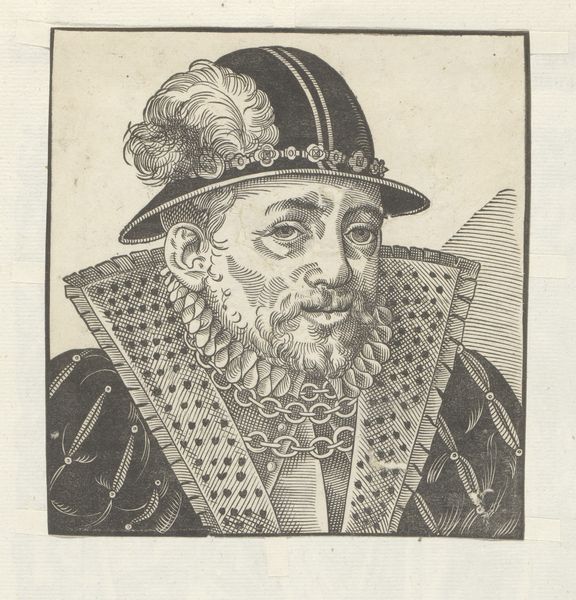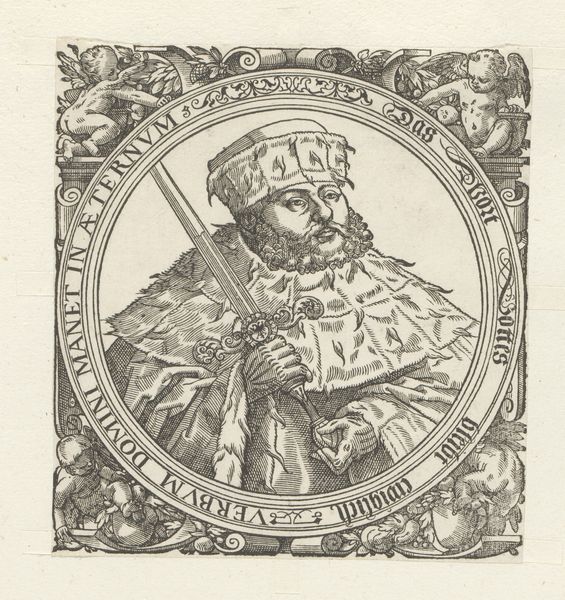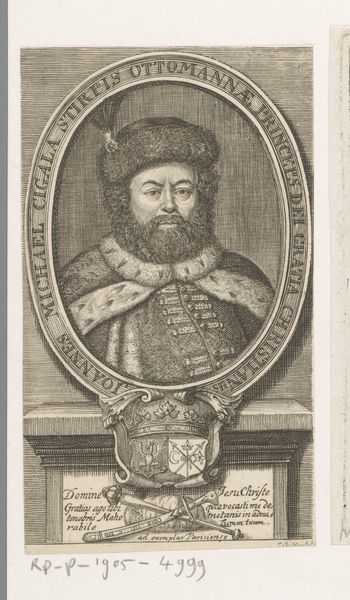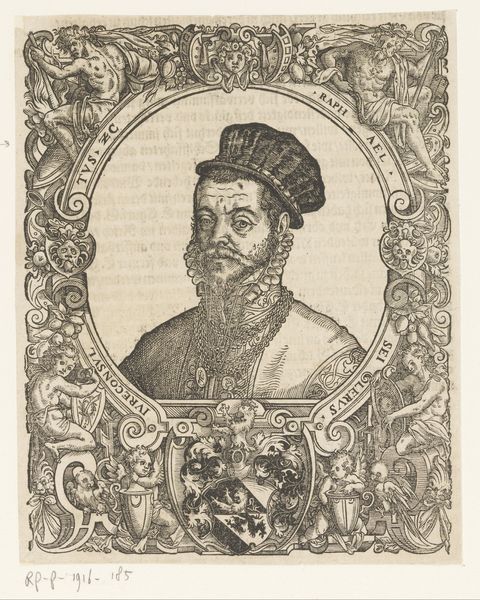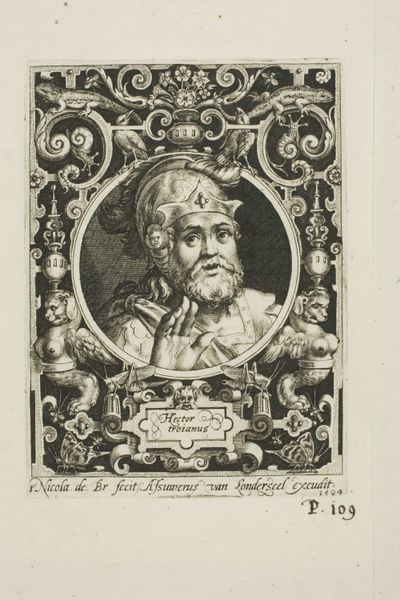
print, paper, ink, engraving
#
portrait
# print
#
book
#
paper
#
11_renaissance
#
ink
#
history-painting
#
northern-renaissance
#
engraving
Dimensions: height 140 mm, width 103 mm
Copyright: Rijks Museum: Open Domain
Editor: Here we have "Portret van Erhard Cellius," a print created in 1596 by Jakob Lederlein. The subject gazes out, framed by an ornate oval. I am immediately drawn to the intricacy of the engraved lines, especially in the details of the fur and ruff. What can you tell me about this piece? Curator: Indeed. The work’s strength resides in its masterful deployment of line. Consider how Lederlein varies the density and direction of hatching to simulate the textures of fur, fabric, and even the sitter’s skin. Do you observe how the relatively simple shapes that constitute the decorative frame further highlight the detailed portraiture at the centre? Editor: I see what you mean; the frame is more illustrative and symbolic compared to the portrait. It doesn't seem to distract too much from the subject of the print. Curator: Precisely. The subject, identified as Erhard Cellius, is rendered with impressive detail for an engraving. Note the considered depiction of his hands, one holding a closed book. It's not only about recording a likeness, but also using line and composition to project an image of erudition and standing. Observe how the framing devices create dynamic shapes. It moves your eyes around and toward the subject in the middle. Editor: It's like the border highlights the realism of Cellius and makes it the core point of the artwork! It emphasizes the sitter's scholarly persona, drawing our focus toward his learned intellect through sharp line work. Thanks for pointing out these details! Curator: The exercise in scrutinizing visual strategies can prove rather insightful, as a single image gains the power to communicate across vast reaches of space and time.
Comments
No comments
Be the first to comment and join the conversation on the ultimate creative platform.

